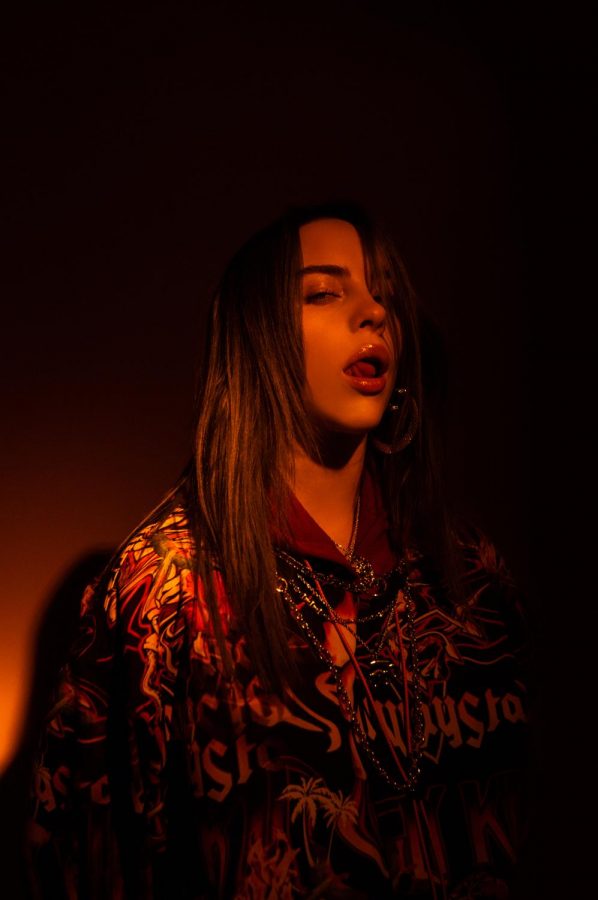Billie Goes Bad
May 4, 2019
17-year-old whisperpop-star Billie Eilish recently released her debut album “When We All Fall Asleep, Where Do We Go?” and among the most popular tracks is her carnal paean “bad guy.”
The leading song of the album, “bad guy” sets the tone for Eilish, who’s come to establish herself as an artist with a definitive and unique style.
Following the release of her singles “Ocean Eyes” and “Bellyache” in 2016, Billie accrued a legitimate fanbase until the release of her EP “Don’t Smile at Me” in 2017, which sparked an exponential rise to stardom and her realization as a music and pop-culture sensation by 2018.
She’s become a symbol of a new wave of music that has set to disrupt popular trends of recent decades. Tied to Eilish is her persona of being entirely unconventional, which is quite reflective of her upbringing in an age which fetishizes being out of the zeitgeist. With an aesthetic of oversized sweats, lavish jewelry, and an apparent addiction to unsettling behavior that contrasts her soft, whispering voice and jovial demeanor, Eilish displays herself as being an enigma.
“I like to be remembered, so I like to look memorable.” Eilish said in a 2018 interview with Paper Magazine.
She contributes to her mysterious image through the music her and her brother Finneas write which is used as a means of exploring various personas different from Billie’s own.
In “bad guy,” Eilish wears the hat of a seductive and dominating femme fatale that deconstructs the notion of masculinity.
With lyrics such as “I’m that bad type/Make your mama sad type/Make your girlfriend mad tight/Might seduce your dad type,” Eilish presents herself as an aloof, almost cruel force to be reckoned with, which are traits often attributed to men. She continues, “I like it when you take control/Even if you know that you don’t/Own me, I’ll let you play the role/I’ll be your animal.” signifying that this “tough guy” she’s addressing is but a puppet for her entertainment–here, the song solidifies its already present sexual tone.
Eilish has always employed a careful and intentional use of visuals and the music video for “bad guy” is no different. Throughout the video, images of traditionally strong male figures are humiliated in the presence of an apathetic Eilish.
From the start, she makes a bodyguard hold her Invisalign, then a line of paternal men use their pot bellies to dance to the beat of her song, and men with serious faces ride comically small trikes while Eilish drives a small convertible. Finally, a sustained shot of Eilish shows her sitting atop a man as he does push-ups. In all these instances, Eilish eliminates the viewers’ preconceived notions of what a “tough guy” looks like and how even then, Eilish is in charge.
Lyrically, Eilish does offer a concession after identifying herself as the “bad guy” when she simply says “duh” in a completely monotone and almost jocular voice which reminds us that all this is but a fiction, a villainous character of hers.
However after viewing a performance so convincing, it begs the question, how much reality does Eilish imbue into this alleged “mask”?






